Blue Ridge Parkway, VA 9/13/2021
All photos are © Marshall Faintich
I had already planned to go birding up on the Blue Ridge Parkway and Route 610, but didn't expect to see very much. The large high pressure area that had brought us cooler and drier air had moved off the east coast and into the Atlantic Ocean, and its associated clockwise rotation was bringing warm and moist southerly winds into the region. It didn't seem like that would bring migrating birds here from more northern latitudes.
But when I checked the BirdCast radar this moring, I saw an unusual pattern. Birds migrating south along the Mississippi flyway were being pushed to the southeast, perhaps because of the approaching storm in the Gulf of Mexico near the coasts of Texas and Louisiana.

BirdCast radar
| | |
When I arrived at Rockfish Gap, there were very strong winds. That meant that many of the birds would be hunkered down, and those that were foraging would be tough to spot with all the leaves blowing. I stopped first at the old tower along Route 610, and saw a Chestnut-sided Warbler and a Black-throated Green Warbler.
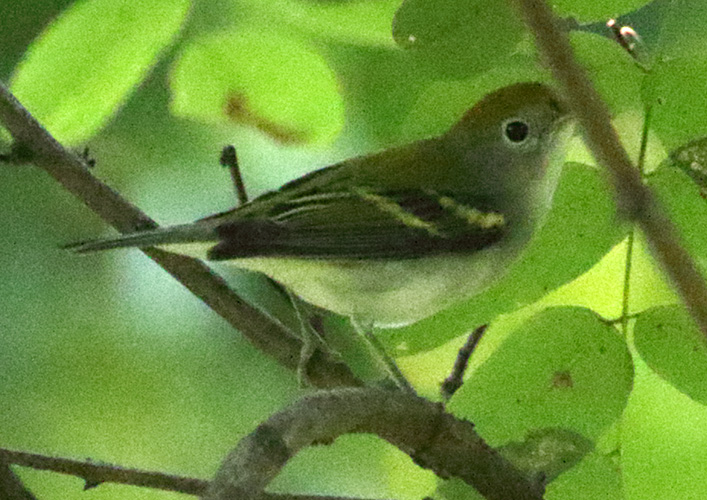
Chestnut-sided Warbler
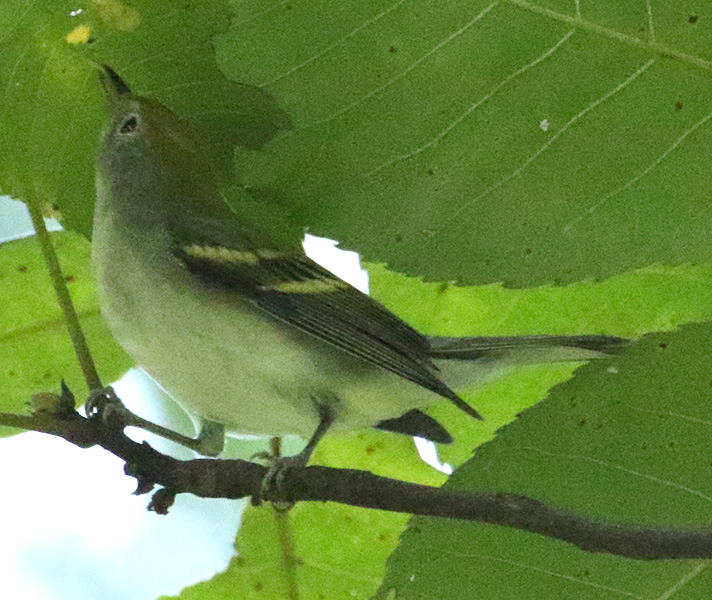
Chestnut-sided Warbler

Black-throated Green Warbler

Black-throated Green Warbler
I continued south on 610, heard the chink call of a Hooded Warbler where I have been seeing a pair of them, but continued on without stopping to look for it. I didn't hear any other birds, and it was too windy there. I hoped that the winds would subside as I got farther to the south and away from Rockfish Gap. My next stop was at the upper, south end of the Cirque on the parkway (mm. 7.5). It was loaded with birds, and I logged 12 avian species there, including 5 warbler species.

Ovenbird
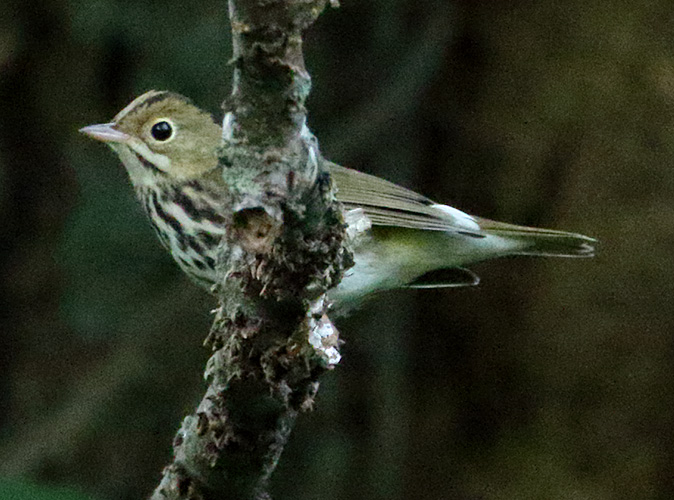
Ovenbird
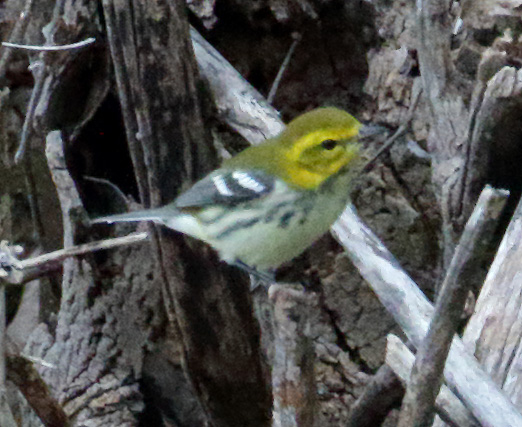
Black-throated Green Warbler
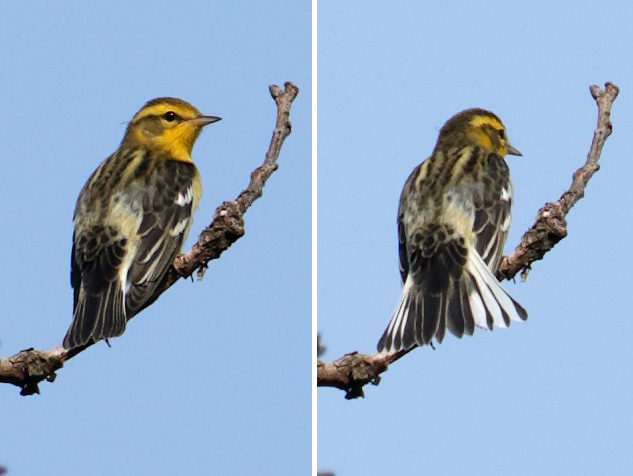
Blackburnian Warbler
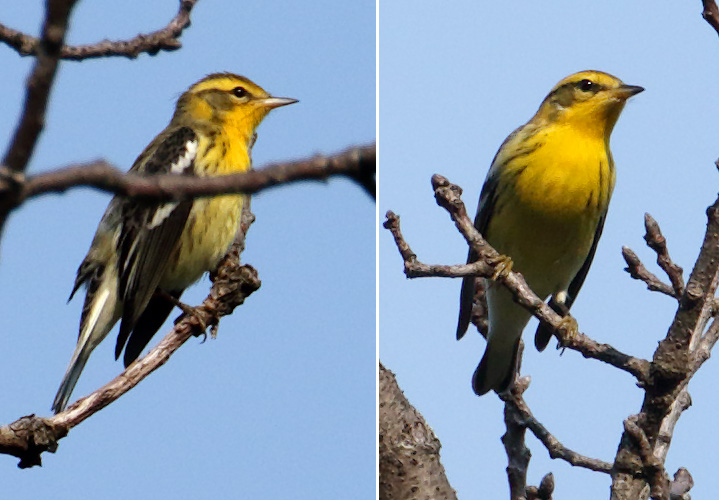
Blackburnian Warbler
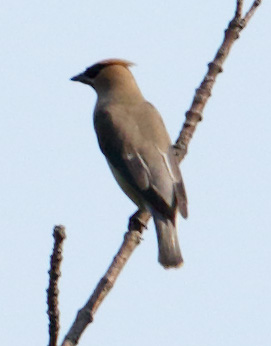
Cedar Waxwing
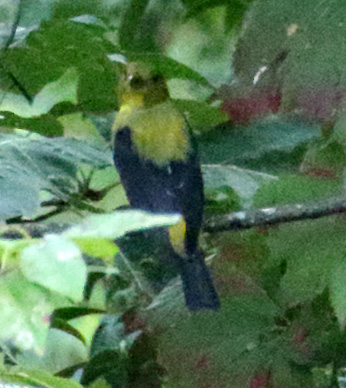
Scarlet Tanager
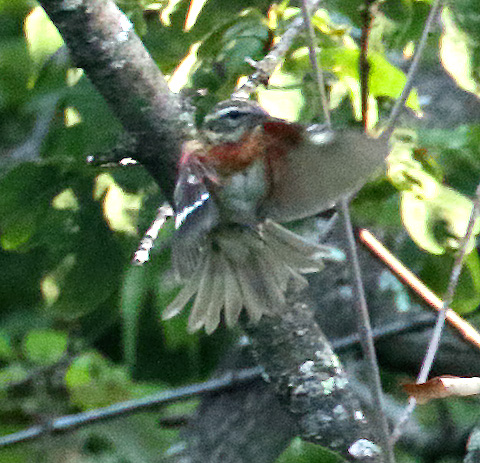
Rose-breasted Grosbeak
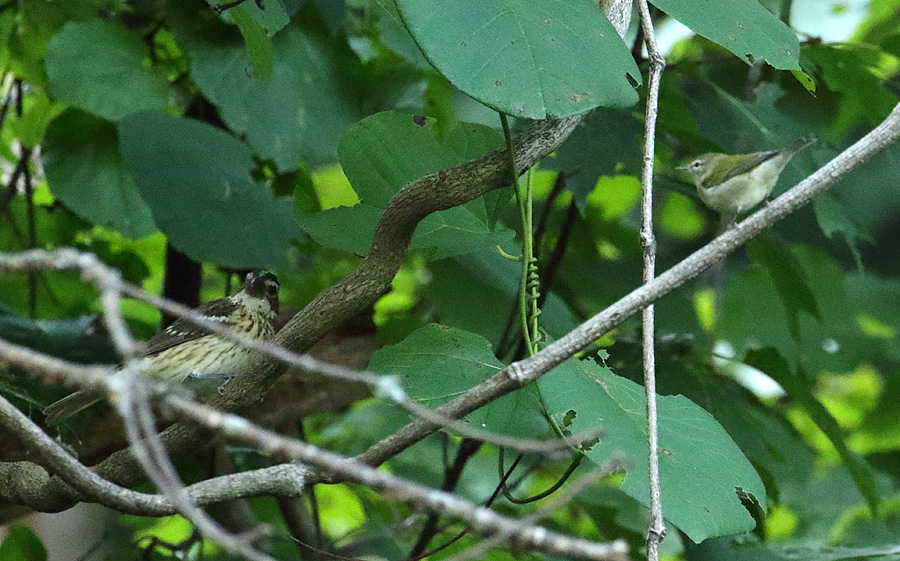
Rose-breasted Grosbeak and Tennessee Warbler

Rose-breasted Grosbeak and Tennessee Warbler
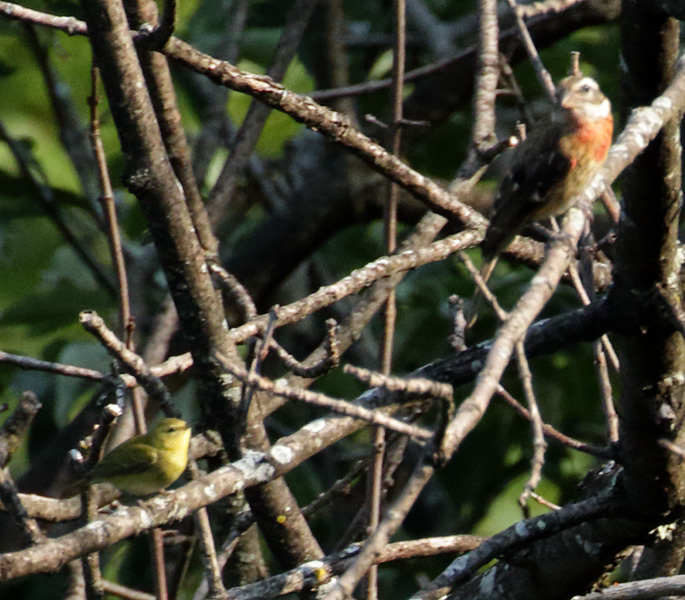
Rose-breasted Grosbeak and Tennessee Warbler
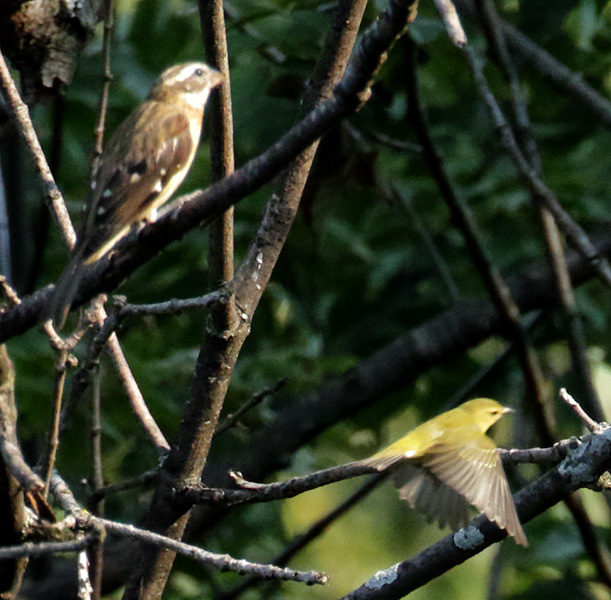
Rose-breasted Grosbeak and Tennessee Warbler

Tennessee Warbler
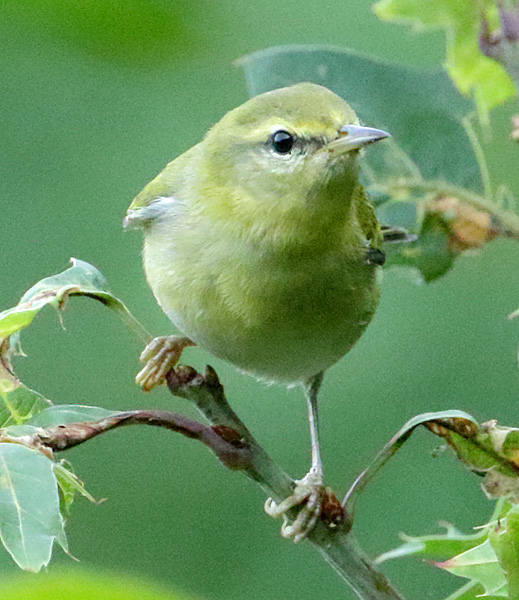
Tennessee Warbler
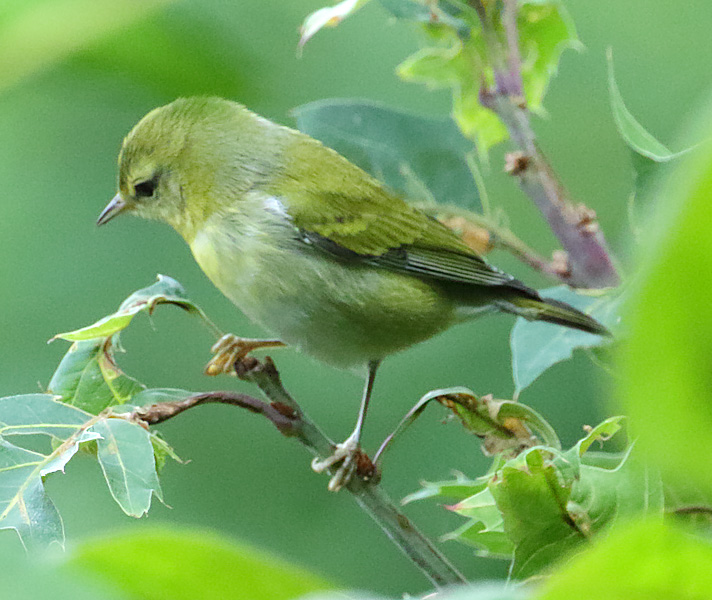
Tennessee Warbler
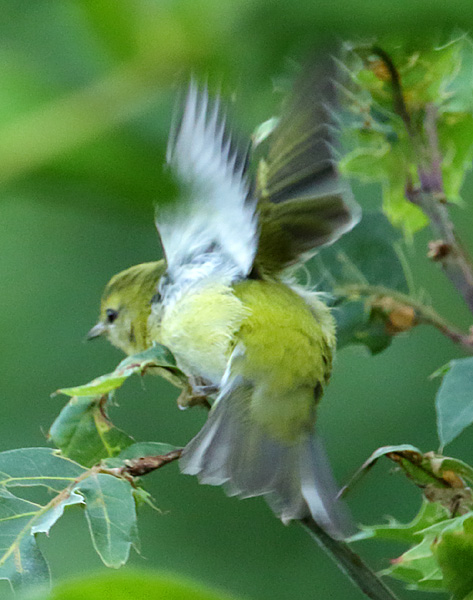
Tennessee Warbler
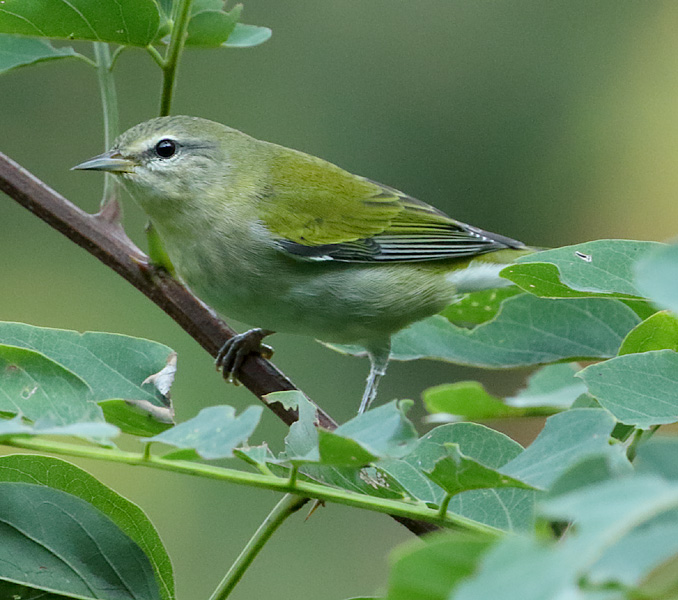
Tennessee Warbler

Tennessee Warbler
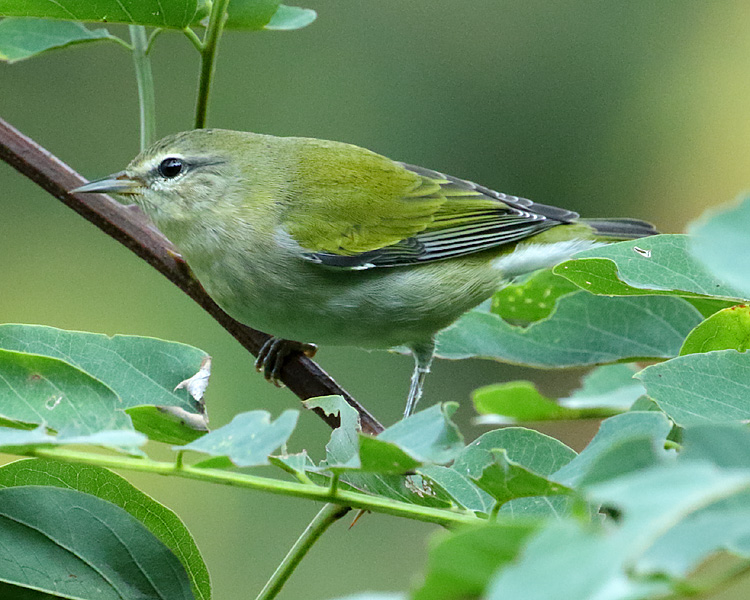
Tennessee Warbler
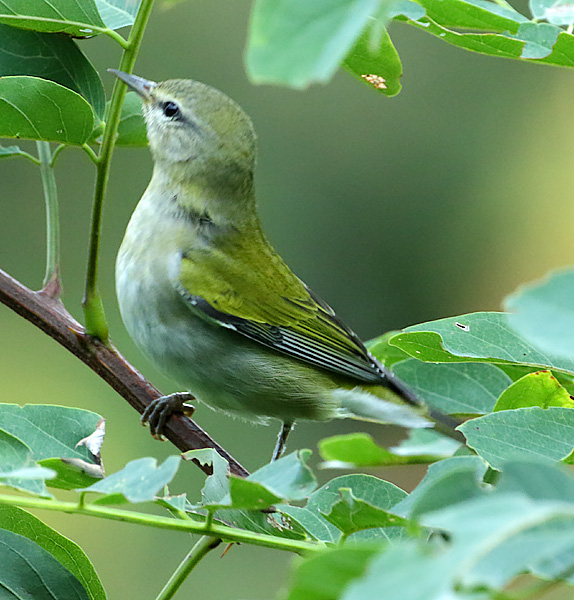
Tennessee Warbler
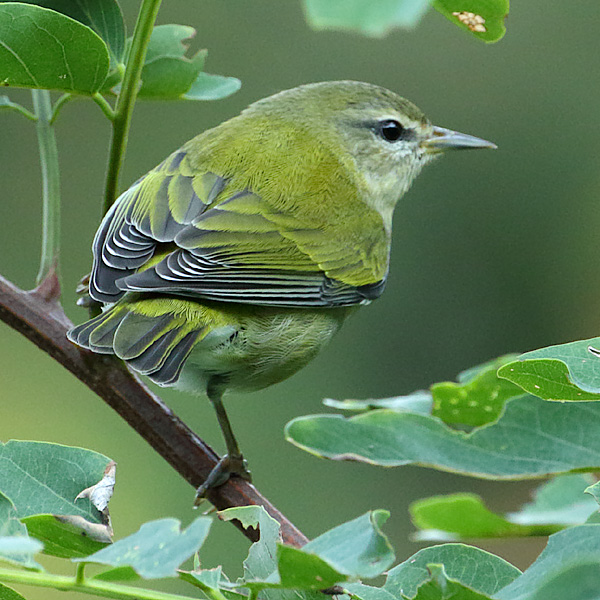
Tennessee Warbler
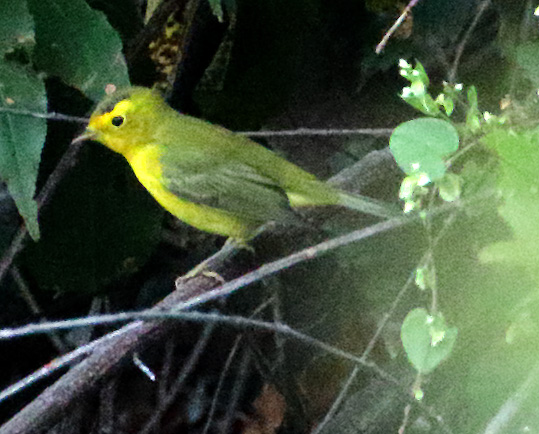
Wilson's Warbler
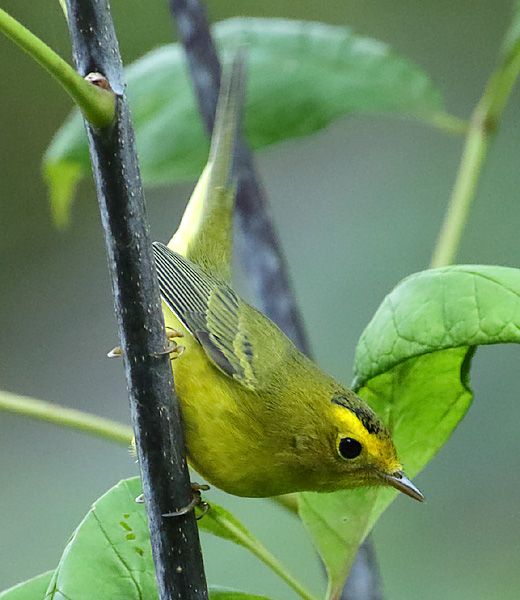
Wilson's Warbler
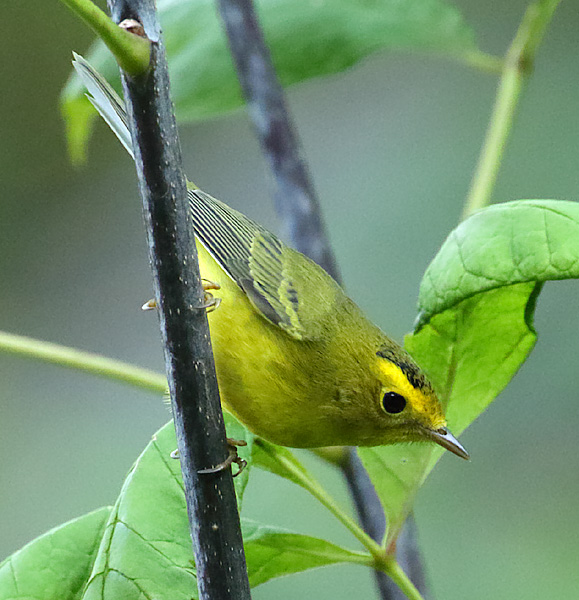
Wilson's Warbler
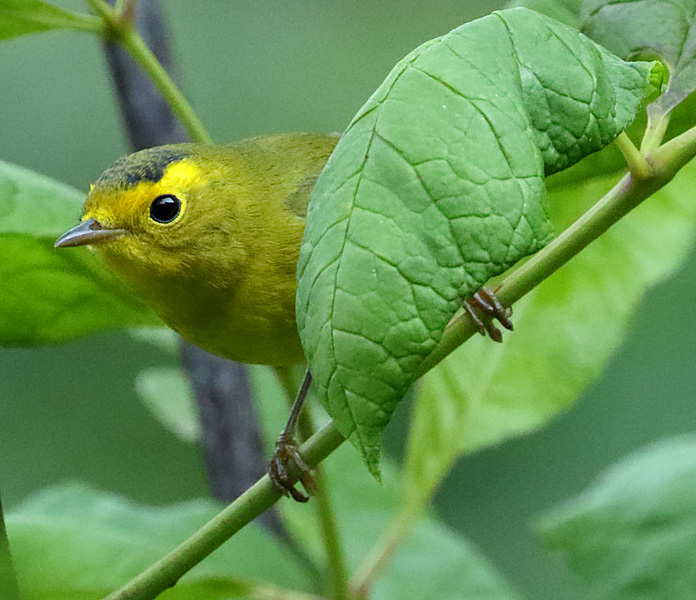
Wilson's Warbler
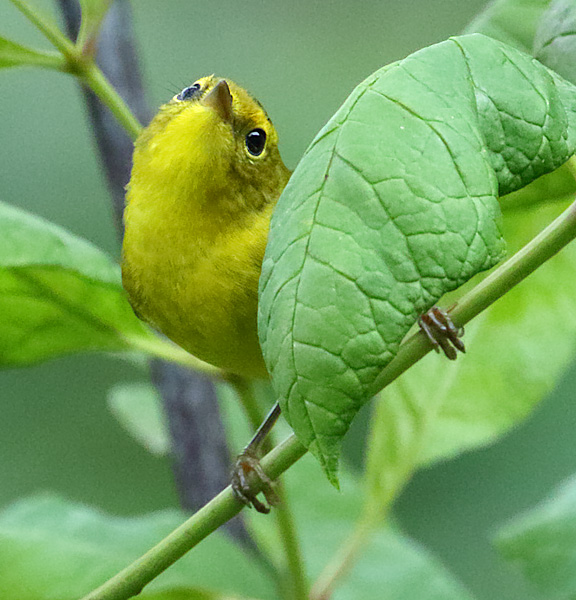
Wilson's Warbler
By this time, I had logged 17 avian species for the morning, and decided to look for the Connecticut Warbler on the Rockfish Valley Trail that I had seen there on September 10th. In my posting of September 10th, I had called it a probable Nashville Warbler. Soon after posting my report, John Rowlett emailed me that it was a Connecticut based on the following:
1) leg color is COWA, not Nashville
2) solid yellow crissum (no ill-defined white "strap" between undertail coverts and belly; this is impt)
3) undertail coverts are too long for Nashville
4) bird is too stout, bulky for Nashville
5) suffusion of brownish or dull greenish on head
6) dense habitat (insofar as I can tell) much better for COWA than Nashville
7) bill appears too heavy for Nashville
8) eye is too large for Nashville and too thickly encircled by unbroken ring
A few birders doubted this species attribution, and were certain from my photos that it was a Canada Warbler, to which John replied back to me:
However, while even further nuanced distinctions could be made in favor of COWA (versus NAWA and CAWA), I think the following, all of which you touch on in your comments, are definitive:
A) leg color is COWA, not NAWA
B) solid yellow crissum (the whitish suffusion in a few of the photos is illusory; there is no distinct white "strap" between undertail coverts and belly, a telling field mark on all NAWAs; this is distinct on all NAWAs and not a mere touch of whitish [perhaps light distortion here] somewhere on the crissum); and this feature rules out CAWA, which has an entirely white crissum
C) eye is too large for Nashville and too thickly encircled by unbroken ring, creating an entirely different facial impression than NAWA and CAWA; and there is no yellow supraloral line whatsoever
Before I was able to get off my first photo of this warbler on September 10th, I had a brief, but very good look at its profile view. It's large eye, and bold eye ring grabbed my attention. There was no hint of a supraloral line seen on Canada Warblers, I didn't notice any breast streaking, and its posture was wrong for a Canada Warbler. I was so focused on its eye and eye ring that I assumed Nashville and didn't check out its breast for a hood that would be seen on a Connecticut. The photos that I posted on September 10th were processed with daylight white balance, and I should have used white balance for shade, so here are a couple of the photos with the correct colors.
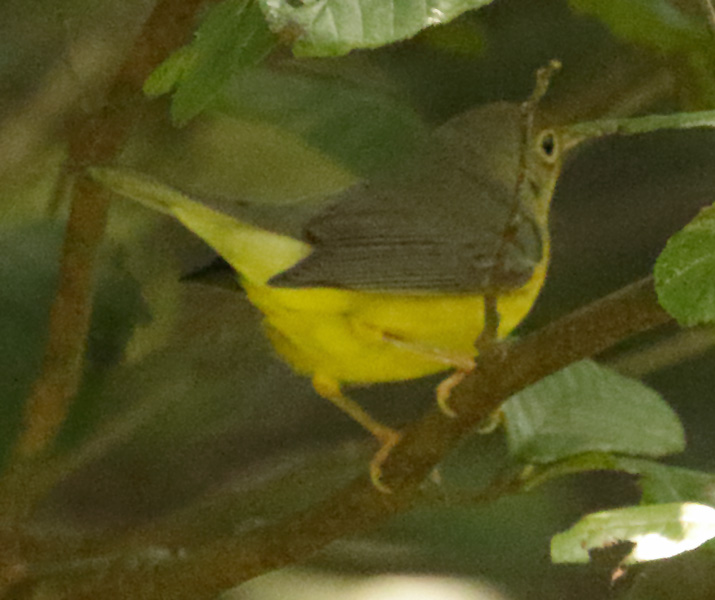
Connecticut Warbler (September 10, 2021)

Connecticut Warbler (September 10, 2021)
On the Rockfish valley Trail, I added 7 more species to my list for this morning, but not a single warbler there. Rather than taking Route 151 north towards home, I back-tracked up Route 664 to Reids Gap on the parkway. It was 10 degrees cooler up there, and perhaps the winds had died down so I could find more warblers. But I only added a Red-bellied Woodpecker to give me 25 avian species for the day.
































